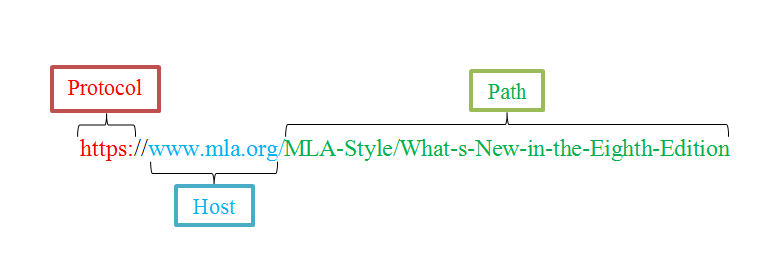What is an MLA citation?
MLA is a style guide for citations from the Modern Language Association (MLA). Citation style guides show you what information to include in each citation and how to organize your list of citations.
MLA citation style is primarily used for research papers in English, culture studies, or language classes. Because these citations are used for specific disciplines, they highlight information important to that subject content. The biggest source of difference between citation styles is in in-text citations. MLA uses parenthetical citations of the author's name and page number. Eg., (Abrams 47). MLA wants the reader to know who wrote/said the quote and where we can find the quote in the original source that is cited. This practice differs from say, APA, who wants to know the author name and the date of publication, because their style guide covers the sciences and social sciences, and more recent sources or studies are emphasized.
However, MLA wants a reader to be able to check the sources cited in a paper, so they require a Works Cited/Bibliography page that enables the reader to locate the author by their last name within it and find the exact quote independently. The MLA Style Guide provides a standard for this information that creates uniformity for ease of use.
Online tools for MLA 8
- Citation MachineCitation Machine is a free citation generator that helps you create citations for your sources as well as giving you up to date information about how to format your own citations in MLA, APA, and Chicago Manual Style.
- Easy BibAccording to their website, "EasyBib is an intuitive information literacy platform that provides citation, note taking, and research tools that are easy-to-use and educational."
- MLA Formatting and Style Guide - Purdue Writing LabOWL, the Online Writing Lab at Purdue University, "offers examples for the general format of MLA research papers, in-text citations, endnotes/footnotes, and the Works Cited page." For quick access, simply remember to Google the words purdue owl mla.
- NoodleTools (citation manager)NoodleTools is a full featured citation and research tool that will help you format and save your citations online. It can help you through the citation process step by step. It can also help you create and manage an outline and/or notecards for your paper, and can help you share your sources with other users.
Examples of MLA Citations and Sample Works Cited Page - 8th Edition
- MLA Citations from Online Writing Lab (OWL) from Purdue Univ. New - 8th EditionClick here for sample MLA citations for online sources. A list on the left side of the page links to more MLA citation models and guidelines
How Do I Deal With? Quick Answers for Citation Problems
If you still have questions, ask an Oakton Librarian.
Call a Librarian:
847.635.1644 (DPC)
847.635.1474 (RHC)
Ask a Librarian - online reference service
Long URLs in your citation? Advice from MLA Style Center (adapted from RW's work)
"...when URLs are so long that they become unreadable, truncating them will be necessary...As a general guideline, a URL running more than three full lines is likely to interfere with the readability of the entry."
Guidelines on Truncating
The MLA Handbook advises writers to truncate a URL in one specific way (by omitting the protocol and //). If you need to shorten it further, retain the host, which will allow readers to evaluate the site and search for the source.
URLs are composed of a few basic components:
- the protocol (basically anything before //)
- the double forward slash
- the host (which encompasses the domain–like World Wide Web, or www)
- the path

For example: the shortened version of the following URL:
go.galegroup.com/ps/retrieve.do?sort=RELEVANCE&docType=Journal+article&tabID=T003&prodId= MLA&searchId=R1&resultListType=RESULT_LIST&searchType=BasicSearchForm&contentSegment=& currentPosition=3&searchResultsType=SingleTab&inPS=true&userGroupName=mla&docId=GALE %7CN2810522710&contentSet=GALE%7CN2810522710
would be
go.galegroup.com/ps
Gibson, Angela. "URLs: Some Practical Advice." MLA Style Center, 2 Nov 2016,
https://style.mla.org/2016/11/02/urls-some-practical-advice/. Accessed 12 March 2019.